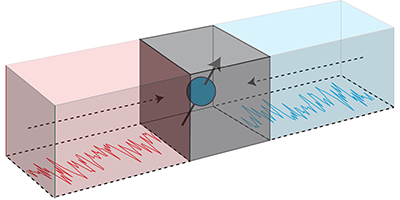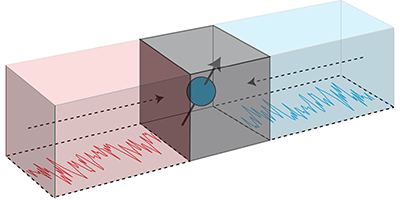Predicting the Quantum Past
Hindsight in quantum physics isn’t exactly , but observing an object at a later time can allow a better guess about its earlier quantum state. In a new experiment, researchers used a weak probe to continuously monitor a single qubit over several microseconds, and with that data they tried to predict the qubit state at some intermediate time. Using only the “before” data, the prediction was right in just of the trials. But adding “after” data boosted the success rate to , suggesting that the quantum state reveals more of itself when past and future measurements are combined.
Quantum physics has always been a bit of a guessing game. In the classic double-slit experiment, for example, a precise measurement of the initial (or final) velocity will not tell you for sure through which slit the particle will go (or has gone). Physicists have, however, developed a way to track particles—and other quantum objects—with so-called weak measurements that can provide imprecise information at several points along the path. The question is, does this limited—but extended—information help you make a better guess?
Kater Murch from Washington University in St. Louis, Missouri, and his colleagues played this guessing game with a superconducting qubit in a microwave cavity. The qubit constantly evolves as a superposition of two different energy states, and the team can monitor this seemingly random behavior with weak measurements using microwave photons. Halfway through each experimental run, the team temporarily concealed the microwave data and then tried to predict these “hidden results” by extrapolating the measurements from before and after. The predictions were markedly different and more confident when future measurements were included. These findings give new understanding of weak probes and how they might be used to make precision measurements of, for example, gravitational waves.
This research is published in Physical Review Letters.
–Michael Schirber





